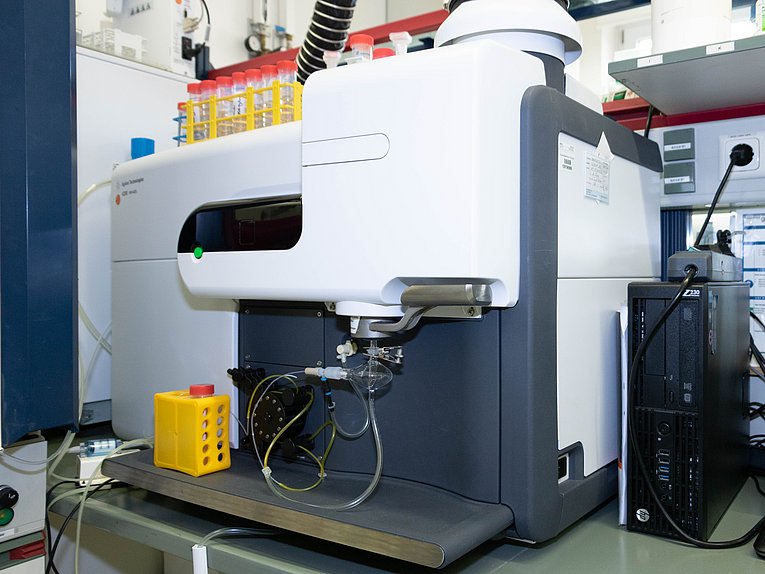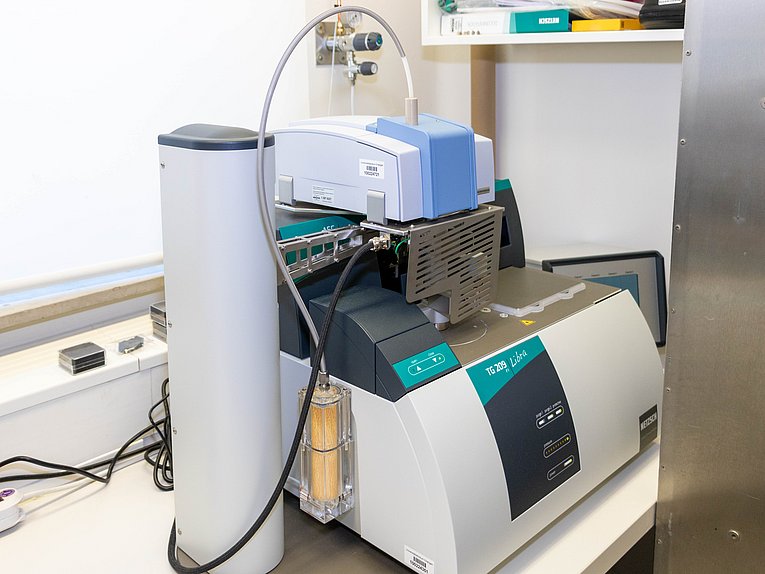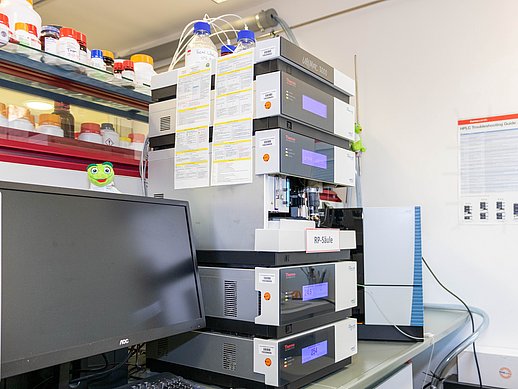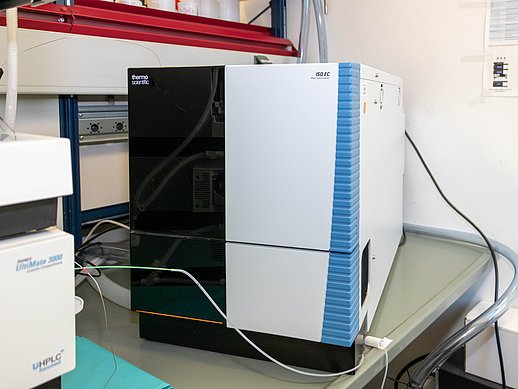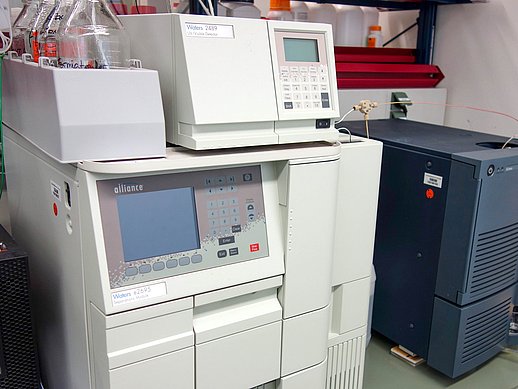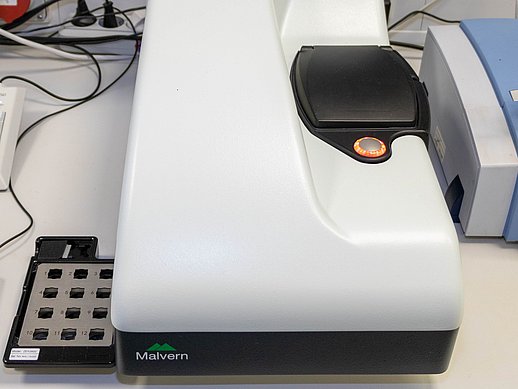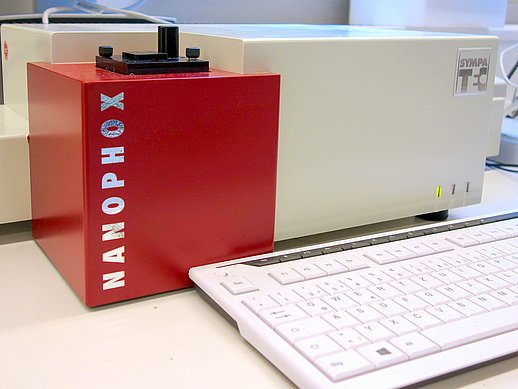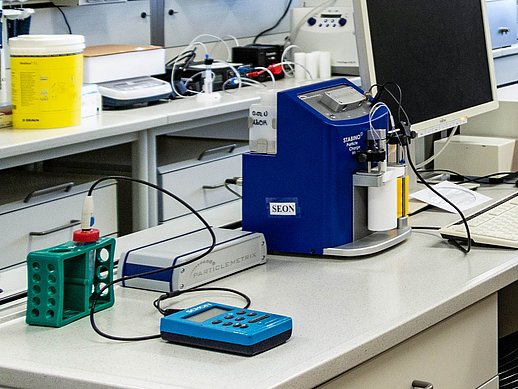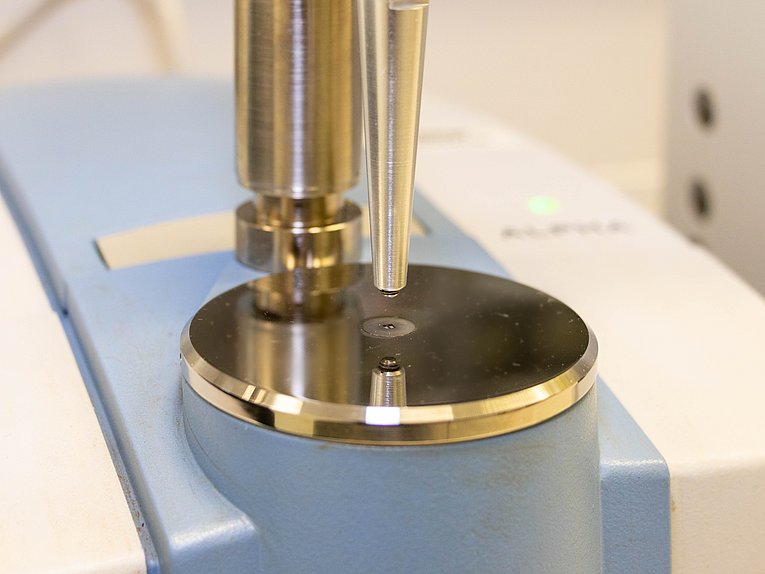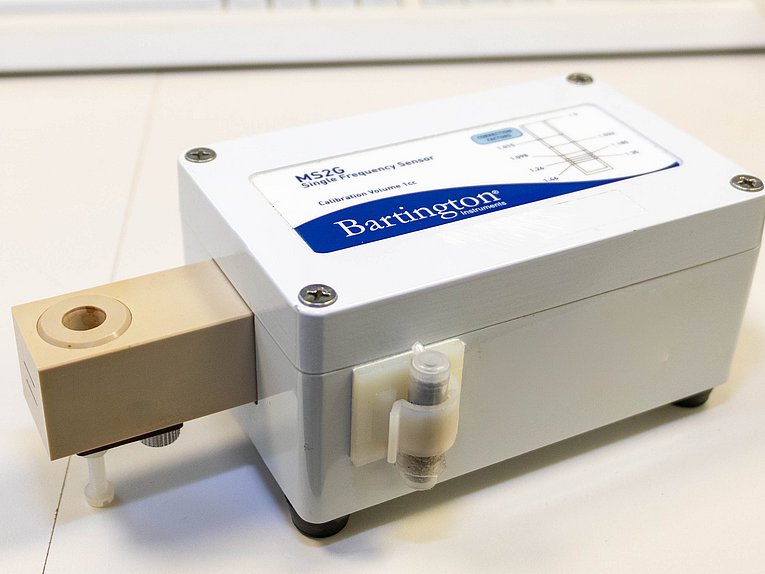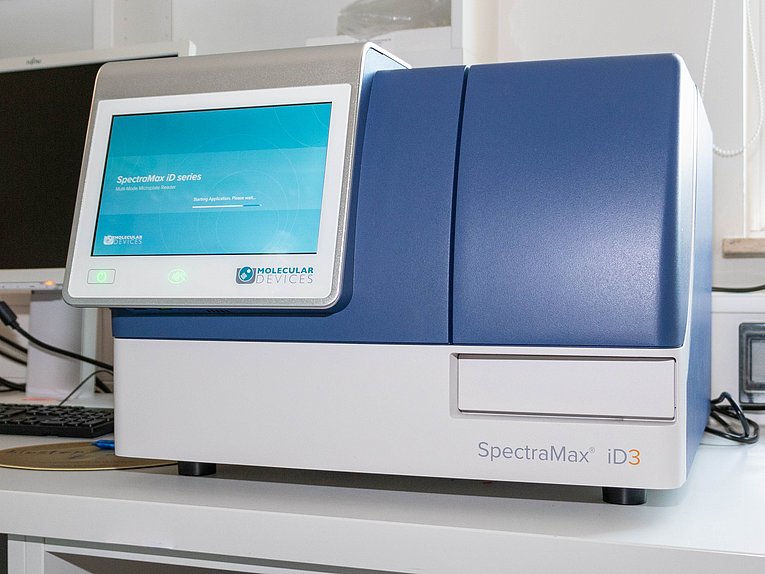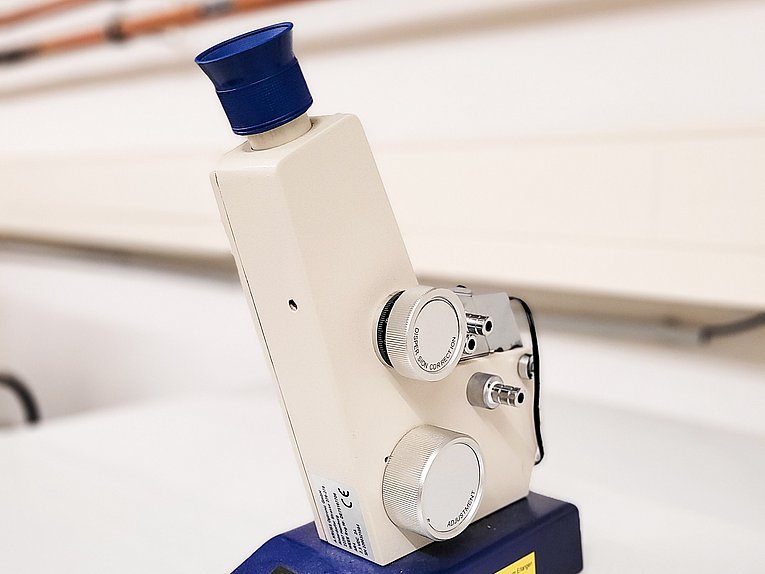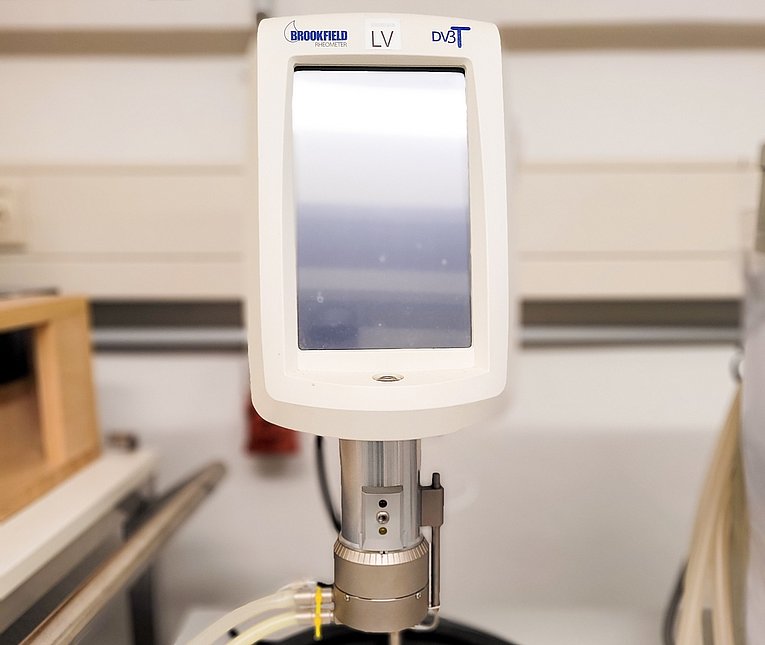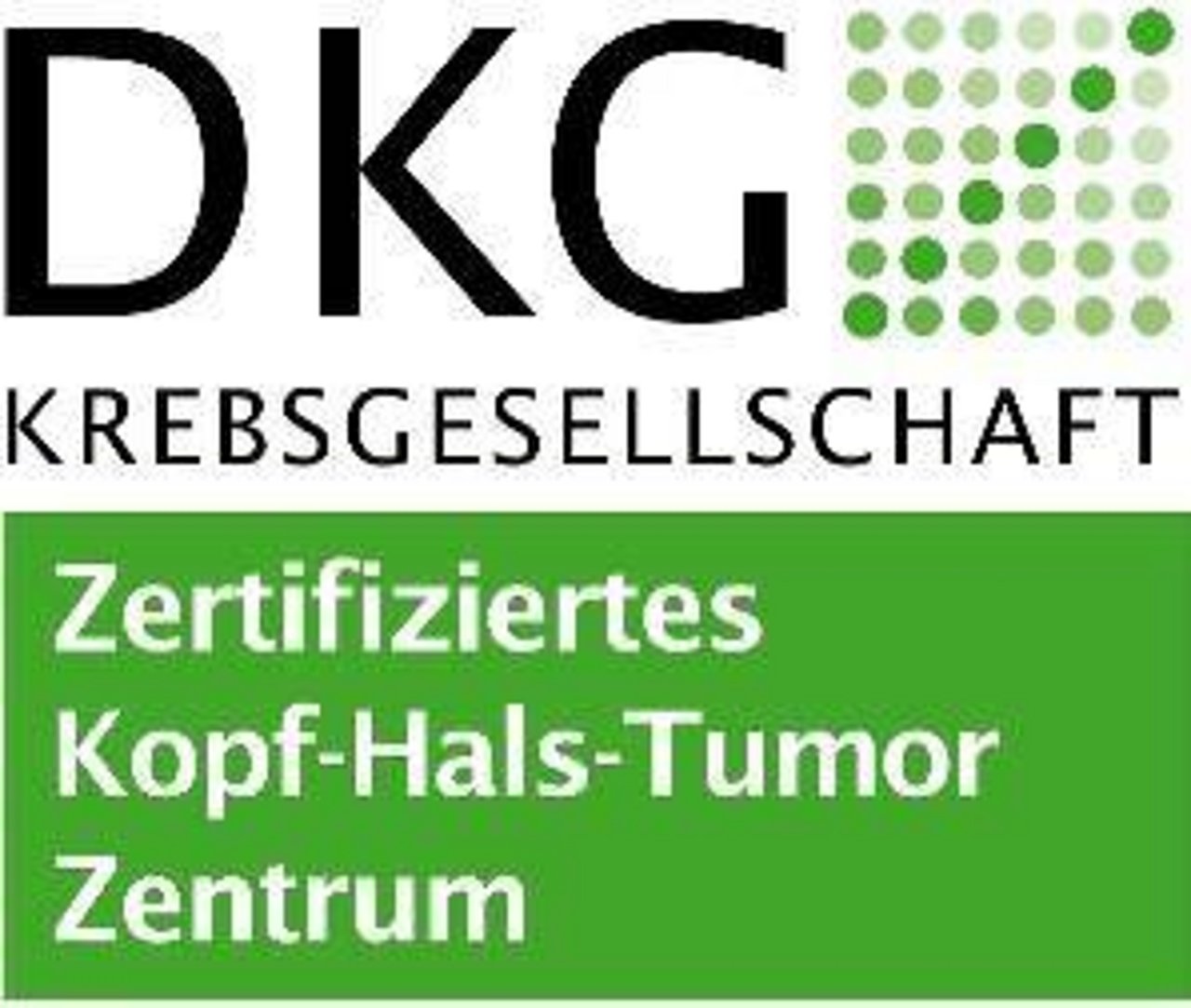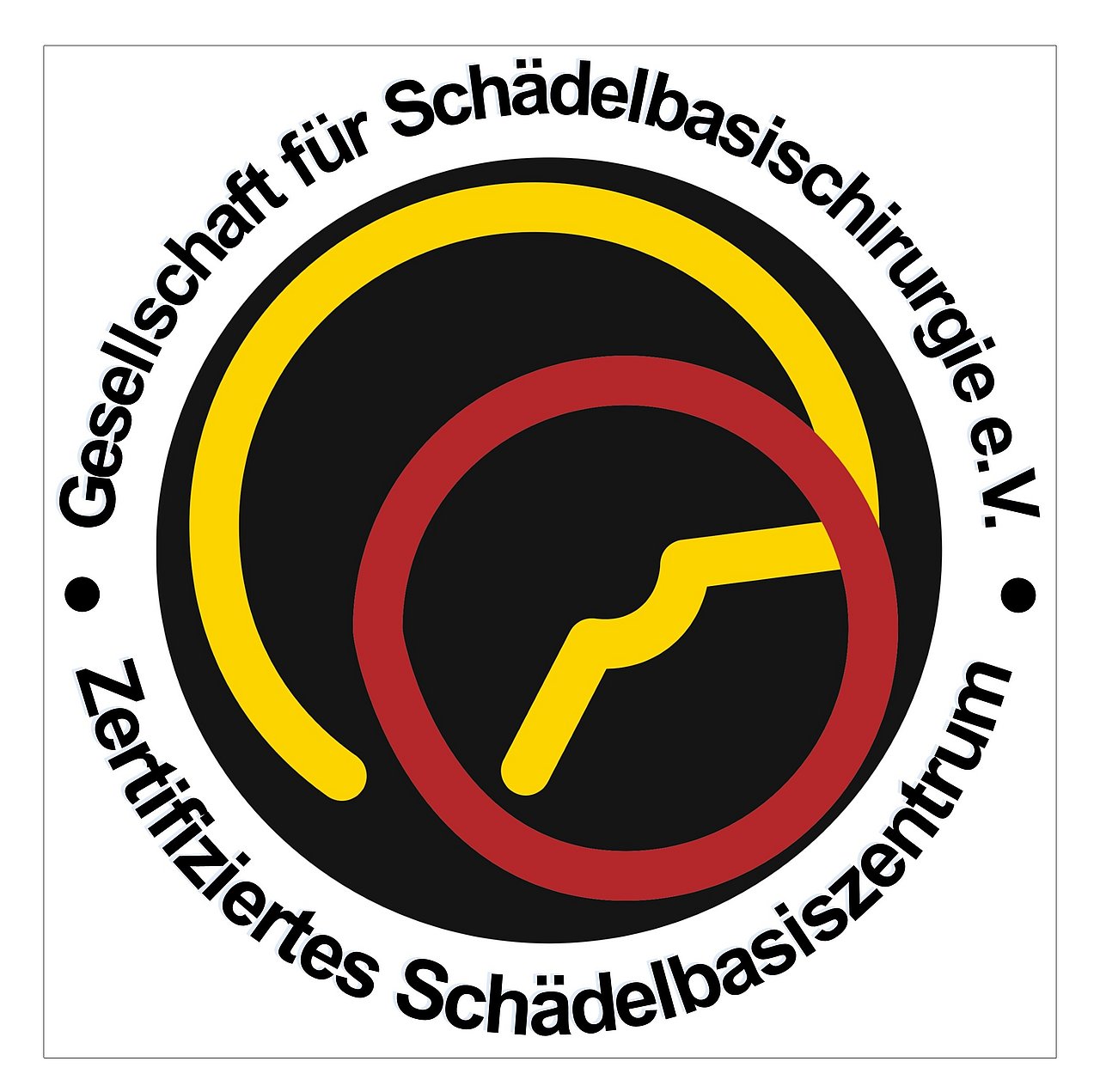Overview of the chemical-physical analytics infrastructure
SEON has a variety of state-of-the-art and high-quality measuring instruments at its disposal to characterize a wide range of particles in detail with regard to their chemical, physical and biological properties. We offer our cooperation partners and external customers to perform corresponding analyses.
You are welcome to contact us in this regard
On this page you will find a detailed listing of our chemical-physical analytical infrastructure:
MP-AES
Microwave plasma atomic emission spectroscopy
With our microwave plasma atomic emission spectrometer (4200 MP-AES from Agilent), we are able to detect numerous elements, in some cases down to several nanograms per milliliter, in the samples or in digested organs. Our system is equipped with a sample changer that can measure up to 180 samples in succession fully automatically.
TGA-FTIR
Thermogravimetric analysis
Thermogravimetric analysis (TGA, Netzsch Company) directly measures the change in weight of a material when it is heated over a range of temperatures in a controlled atmosphere. If weight loss is observed, it may be accompanied by off-gases associated with the volatilization of solvents or the degradation of the material. Coupling TGA with an FTIR spectrometer (Bruker Alpha), which can then be used to chemically identify the gases produced, helps to elucidate information that cannot be obtained with TGA alone.
HPLC-UV/MS
High performance liquid chromatography
For the quantification of drug concentrations and other small molecule components of nanoparticulate substances, we have two different HPLC systems at our disposal. On the one hand, we have an UltiMate 3000 HPLC from Thermo Scientific, which is equipped with both a UV and an ISQ EC SQD MS detector. In addition, we have another HPLC-UV system from Waters Alliance System. For both chromatography columns for different separation methods are available.
DLS
Particle size and zeta potential measurement
The (hydrodynamic) size of nanoparticles as well as their surface charge is of very special importance for the application of such materials. Therefore SEON owns several instruments in this field to characterize these parameters in detail. We use a Zetasizer Nano ZS (from Malvern Panalytical) to measure the (hydrodynamic) size, electrophoretic mobility of proteins, the zeta potential of colloids and nanoparticles as well as the microrheological measurement of protein and polymer solutions. Furthermore, we use a Nanophox from Sympatec, which allows particle size & stability analysis by photon cross correlation spectroscopy (PCCS) of opaque suspensions and emulsions. To determine the charge characteristics of nanoparticles and polyelectrolytes, SEON uses a Stabino from Colloid Metrix.

